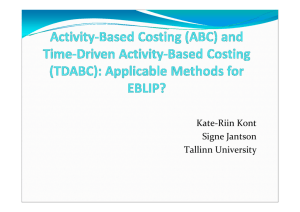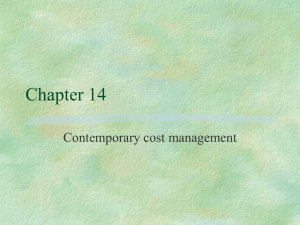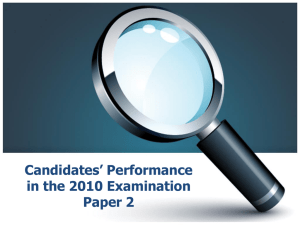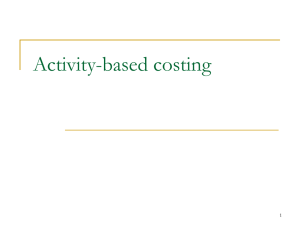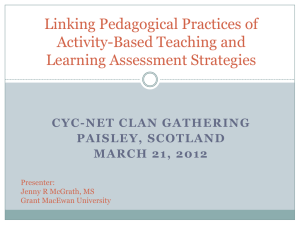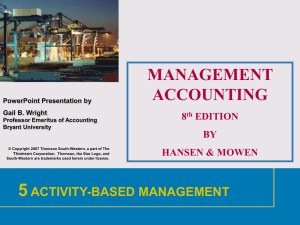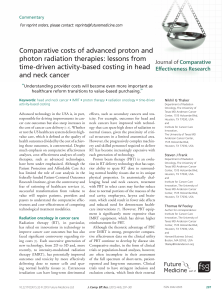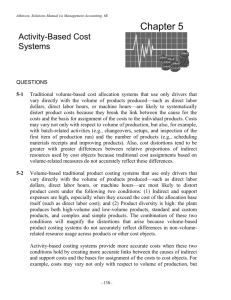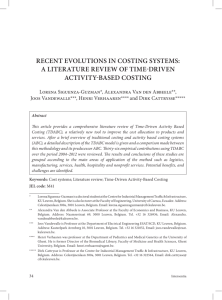presentation
advertisement
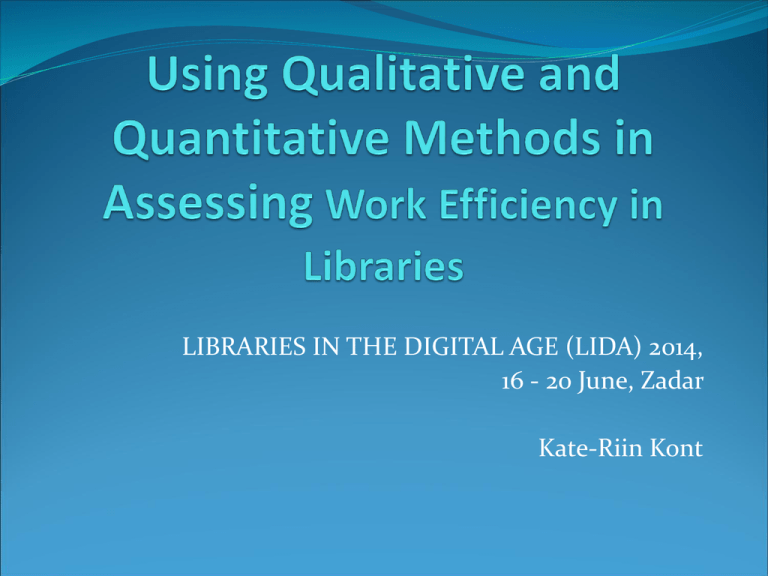
LIBRARIES IN THE DIGITAL AGE (LIDA) 2014, 16 - 20 June, Zadar Kate-Riin Kont For a long time the management of libraries did not pay attention to such areas of librarianship as the development of the effective management of book collections, classification, cataloguing, and the like. This inattention was not important because of the small size of collections, staff, buildings, and clienteles made for simplicity of operation and demanded not very sophisticated approach to the ways of doing things (Coney, 1952, p. 83). Why assess the work efficiency in libraries? At the end of 19th century, at the beginning of 20th century, many libraries were identified as being large enough to apply the ideas of scientific management and cost accounting. Librarians in these libraries were interested in achieving maximum efficiency at minimum cost. Cost accounting Cost accounting, as defined in the Encyclopedia Britannica, is: “a system of accounting designed to show the actual cost of each separate article produced or service rendered” (Rider, 1936, p. 332). Cost accounting is in essence the process of tracking, recording and analysing costs associated with the activity of an organization. Through cost accounting, output indicators are incorporated into the financial system (Doore Van, et al, 2010, p. 40). History of cost accounting research in libraries The early studies and reports of the results of the library cost accounting (e.g. Cutter, 1877; Whitney, 1885; Bishop, 1905) indicate main reasons why cost accounting reached libraries: 1. critics seemed to think that investment in the cataloguing system was a total loss; 2. library managers needed to justify their cataloging costs to the public as well as to their parent organizations; 3. the work which did not seem to involve costs in the eyes of the public had to be justified too. Time and motion study Formal motion and time study, goes somewhat beyond the concept of work simplification and streamlining of processes. R. M. Barnes lists four distinct parts to the process, namely, (1) finding the most economical way of doing the job, (2) standardizing the methods, materials, and equipment, (3) determining accurately the time required by a qualified person working at a normal pace to do the task, and (4) assisting in training the worker in the new method (Barnes, 1949, pp. 1-4). Library staff performance studies Both cost accounting as well as time and motion studies (e.g.Baldwin & Marcus, 1941; Battles et al, 1943; Hardkopf, 1949; Pierce, 1949) have been applied for better library service, lower cost, or both. Throughout history they have been closely related to the identification of library staff performance: • effectiveness, • efficiency and • productivity. Library staff performance studies Cost accounting as well as time and motion studies in libraries deal with: • the performance of individual worker, • work simplification, • salary standardization, • determination of the standards of performance for specific library operations, • improvement of working conditions (in regard to light, noise, fatigue), • systematic in-service training, • employee turnover, • careful definition and assignment of work in each department. Activity-based costing Activity-Based Costing (ABC) was designed in the United States during the 80’s by Cooper and Kaplan There is a four-step approach to implement the ABC system (Cooper & Kaplan 1988): identify the key activities and relevant cost drivers, allocate staff time to activities, attribute staff salaries and other costs to activity cost pools, determine the cost per cost driver. Activity-based costing studies The testing and implementation of the ABC is already very common in university libraries around the world (Goddard & Ooi, 1998; Ceynowa, 2000; Poll, 2001; EllisNewman, 2003; Heaney, 2004; Ching & Leung, 2008). Many library managers have decided that activity based costing method is the best of existing cost analysis method adapted for evaluating library products. Time-driven activity-based costing Time-driven activity-based costing (TDABC) was designed as revised and easier version of ABC by Kaplan and Anderson at the beginning of 21st century (Kaplan & Anderson, 2004; Kaplan & Anderson, 2007). In the TDABC model only two parameters are required: (1) the number of time units (e.g. minutes) consumed by the activities related to the cost objects (the activities the organization performs for products, services, and customers) and (2) the cost per time unit. TDABC studies in libraries * Pernot, E., F. Roodhooft, and A. Van den Abbeele. „Time-Driven Activity-Based Costing For Interlibrary Services: A Case Study in A University.“ The Journal of Academic Librarianship 33.5 (2007): 551560. * Stouthuysen, K., M. Swiggers, A-M. Reheul and F. Roodhooft. “Time-Driven Activity-Based Costing for a Library Acquisition Process: A Case Study in a Belgian University.” Library Collections, Acquisitions, and Technical Services 34.2-3 (2010): 83-91. * Siguenza-Guzman, L., A. Van den Abbeele, J. Vandewalle, H. Verhaaren, D. Cattrysse (2013). „Using Time-Driven Activity-Based Costing To Support Library Management Decisions: A case Study For Lending And Returning Processes.“ Library Quarterly: Information, Community, Policy 84.1 (2014): 76-93. * Siguenza-Guzman, L., A. Van den Abbeele, D. Cattrysse (2014). „Time-Driven Activity-Based Costing Systems for Cataloguing Processes: A Case Study.“ Liber Quarterly 23.3 (2014): 160–186. Research methods Cost accounting research in libraries have almost always combined both qualitative and quantitative methods, like: 1. analysis of statistical data (e.g. collecting all types of accounting data about the costs that occur in the production of library services), 2. documents (e.g. job descriptions), 3. time sheets and time diaries, 4. observations, 5. interviews and/or 6. questionnaires. Research methods Specific time studies of personnel activity will give the most precise data about the actual tasks performed: • The self-administered diary method is most often employed in historical library cost accounting studies for determining labor costs (Rider 1936, Miller 1937). • Time sheets are another very common method for costing purposes (Chargeable and non-chargeable time!!!). • In 1970s, the methods such as random time sampling with self-observation and interviewing staff with closed questions were added for library cost accounting studies (Spencer 1971, Masterson 1976). Research methods For library activities, identification and definitions, the direct observations, systematic sampling process and the open interviews without the structured questionnaire are the part of new cost accounting models studied in academic libraries (Pernot et al 2007; Stouthuysen et al 2010). Important! All library activities are intellectual activities which demand knowledge, judgement, and initiative. Reichmann’s (1953) has argued that “librarians, but especially when they are dealing with acquisition and cataloguing or even with bibliographical describing, should have freedom to decide how much time can be spent on the cataloguing or describing of one title, or that the concern is with quality alone not with the quantity of output.” (Reichmann, 1953, p. 310). Conclusions * No method of measurement can not give all answers and the final truth. There are intangible factors in the library work that no measurement method can ever reach. * In and of itself no cost system can cut costs. All it can do is to show the administrator where costs may, and should, be cut. * TDABC seems to be one of the best tools for understanding cost behavior and for refining a cost system for university libraries. * While integrating the TDABC method with the analysis of library performance indicators, the more valuable data is possible to produce for managerial decisions. Thank You!
